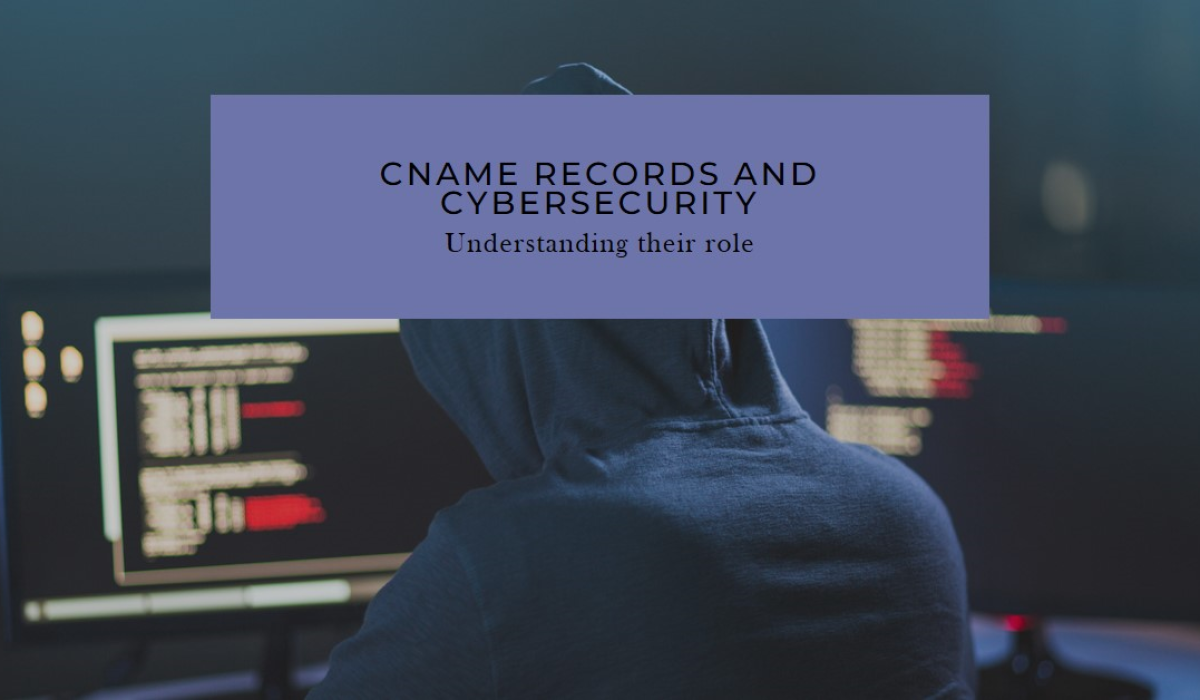Introduction
The internet relies on the Domain Name System (DNS), a massive phonebook that translates human-readable domain names (like [invalid URL removed]) into numerical IP addresses that computers understand. This process is vital for connecting to websites and online services.
Within DNS, CNAME (Canonical Name) records act as aliases, allowing one domain name to point to another. This simplifies domain management and offers flexibility in directing traffic.
Understanding DNS CNAME Records
DNS (Domain Name System) is a crucial part of the internet infrastructure, translating human-readable domain names into IP addresses. Among the various types of DNS records, CNAME (Canonical Name) records play a significant role in managing domain names efficiently. Let’s dive into what CNAME records are, how they work, and when to use them.
- What are CNAME Records?
CNAME stands for Canonical Name. A CNAME record is a type of DNS record that maps one domain name (an alias) to another (the canonical name). In simpler terms, it’s a way to create an alias for a domain name.
Purpose of CNAME Records:
- To point multiple domain names to a single canonical domain
- To simplify domain management
- To facilitate easier migration of services
- How CNAME Records Work
CNAME records allow one domain to point to another domain instead of directly to an IP address. Here’s a basic example of how a CNAME record might look:
Copy
blog.example.com CNAME example.com
In this case, blog.example.com is an alias that points to example.com. When a DNS lookup is performed for blog.example.com, the DNS resolver will see the CNAME record and then perform a second lookup for example.com to get the IP address.
It’s important to note that CNAME records can only point to other domain names, not directly to IP addresses. For pointing directly to an IP address, you would use an A record instead.
- Common Scenarios for Using CNAME Records
CNAME records are versatile and can be used in various situations. Here are some common scenarios:
a) Subdomains: CNAME records are often used to create subdomains that point to the main domain. For example:
Copy
support.example.com CNAME example.com
store.example.com CNAME example.com
This setup allows you to have different subdomains all pointing to the same website, simplifying management and allowing for future flexibility.
b) Load Balancing: CNAME records can be used in conjunction with load balancing services. Instead of pointing directly to a server, you can point to a load balancer’s domain:
Copy
www.example.com CNAME loadbalancer.service.com
The load balancing service can then distribute traffic across multiple servers.
c) Content Delivery Networks (CDNs): When using a CDN, CNAME records are often employed to direct traffic to the CDN’s servers:
Copy
www.example.com CNAME example.cdn-provider.com
This allows the CDN to serve your content from the nearest geographic location to the user.
d) Email Services: Many email providers use CNAME records for email authentication systems like DKIM:
Copy
dkim._domainkey.example.com CNAME dkim.email-provider.com
e) Temporary Redirects: During website migrations or when temporarily moving services, CNAME records can be used to redirect traffic:
Copy
old-service.example.com CNAME new-service.example.com
Understanding and effectively using CNAME records can greatly simplify domain management and provide flexibility in how you structure your online presence. Whether you’re setting up subdomains, using a CDN, or implementing load balancing, CNAME records are a powerful tool in your DNS toolkit.
The Role of CNAME Records in Cybercrime
While CNAME records serve legitimate purposes in domain management, they can also be exploited by cybercriminals for malicious activities. Understanding these threats is crucial for maintaining robust cybersecurity practices.
- Exploiting CNAME Records for Malicious Purposes
Cybercriminals can manipulate CNAME records in several ways:
a) Subdomain Takeover: If a CNAME record points to a service that’s no longer active, attackers can potentially claim that abandoned subdomain. This could allow them to serve malicious content under a seemingly legitimate domain.
b) DNS Rebinding Attacks: Attackers can use CNAME records in DNS rebinding attacks, where they trick a victim’s browser into making requests to internal network resources.
c) Evading Detection: By using multiple CNAME records, attackers can create a chain of redirects that makes it harder to trace the ultimate destination of a request.
- Domain Spoofing and Phishing Attacks
CNAME records can be misused in sophisticated phishing campaigns:
a) Lookalike Domains: Attackers can create subdomains that look similar to legitimate services. For example:
Copy
login-secure.example.com CNAME attacker-controlled-domain.com
This could trick users into thinking they’re accessing a secure login page for example.com.
b) Credential Harvesting: By pointing a subdomain to a phishing site, attackers can harvest credentials while appearing to be part of a legitimate domain.
c) Email Spoofing: Misconfigured CNAME records can sometimes be exploited for email spoofing, allowing attackers to send emails that appear to come from a legitimate domain.
- Creating Deceptive Subdomains
Attackers can use CNAME records to create convincing subdomains for various malicious purposes:
a) Fake Support Pages:
Copy
support.legitimate-site.com CNAME malicious-site.com
This could lead users to a fake support page designed to steal information.
b) Malware Distribution: Attackers might create subdomains that appear to be download pages for software updates but actually serve malware.
c) Typosquatting: By registering domains with slight misspellings and using CNAME records, attackers can redirect users who mistype URLs to malicious sites.
Protecting Against CNAME-based Attacks
To mitigate these risks:
- Regularly audit your DNS records, including CNAME entries.
- Implement DNSSEC to prevent DNS spoofing.
- Use strong authentication methods for DNS management.
- Monitor for unauthorized subdomain creation.
- Educate users about phishing tactics and how to verify website authenticity.
Understanding how CNAME records can be misused is crucial for both domain administrators and internet users. By staying vigilant and implementing proper security measures, we can help prevent these types of attacks and maintain a safer online environment.
Certainly! I’ll add these two new sections to our blog post about DNS CNAME records. These additions will provide valuable information on security measures and real-world implications. Here are the new sections:
DNS Security and Threat Mitigation
Securing DNS infrastructure is crucial in maintaining the integrity and safety of internet communications. As CNAME records can be exploited for malicious purposes, implementing robust security measures is essential.
- Importance of Securing DNS Infrastructure
DNS is a critical component of internet infrastructure, often described as the “phone book of the internet.” Compromised DNS can lead to:
- Misdirected traffic
- Data theft
- Reputational damage
- Service disruptions
Securing DNS, including CNAME records, should be a priority for all organizations with an online presence.
- Techniques to Detect and Prevent CNAME Record Abuse
a) Regular Auditing: Conduct frequent audits of your DNS records, including CNAME entries. Look for unauthorized or suspicious records.
b) Monitoring Tools: Implement DNS monitoring tools that can alert you to unexpected changes in your DNS configuration.
c) Access Control: Restrict access to DNS management interfaces and implement strong authentication methods.
d) DANE (DNS-based Authentication of Named Entities): Use DANE to create a binding between the domain name and the certificate, making it harder for attackers to impersonate your domain.
e) CAA (Certification Authority Authorization) Records: Implement CAA records to specify which certificate authorities are allowed to issue certificates for your domain.
- DNSSEC (DNS Security Extensions)
DNSSEC plays a crucial role in ensuring DNS data integrity:
- It adds cryptographic signatures to DNS records, allowing the resolver to verify that the response hasn’t been tampered with.
- DNSSEC can prevent cache poisoning attacks and some forms of DNS spoofing.
- While DNSSEC doesn’t directly prevent CNAME-based attacks, it ensures that the CNAME record itself hasn’t been maliciously altered.
Implementing DNSSEC:
- Work with your domain registrar and DNS provider to enable DNSSEC.
- Ensure proper key management and regular key rollovers.
- Monitor DNSSEC status to quickly detect and resolve any issues.
Real-World Examples
To illustrate the potential impact of manipulated CNAME records, let’s look at some real-world incidents:
- Subdomain Takeover at Uber (2017)
Incident: Security researcher Arne Swinnen discovered that Uber had a subdomain (saostatic.uber.com) pointing to a non-existent Amazon S3 bucket via a CNAME record.
Attack: Swinnen was able to claim the S3 bucket, effectively taking control of the subdomain.
Impact: While Swinnen responsibly reported the issue, a malicious actor could have used this subdomain to host phishing pages or distribute malware under Uber’s domain.
Lesson: Always ensure that services referenced in CNAME records are active and properly secured.
- MyEtherWallet DNS Hijack (2018)
Incident: Attackers managed to hijack MyEtherWallet’s DNS servers and change its DNS records.
Attack: The attackers created a CNAME record pointing MyEtherWallet’s domain to their own malicious server.
Impact: Users visiting the site were redirected to a phishing page, resulting in the theft of approximately $150,000 worth of Ethereum.
Lesson: This incident highlights the importance of securing DNS infrastructure and implementing additional safeguards like DNSSEC.
- Spamhaus CNAME-based DDoS Attack (2013)
Incident: While not directly a CNAME abuse, this massive DDoS attack exploited DNS amplification, highlighting DNS vulnerabilities.
Attack: Attackers used open DNS resolvers to amplify traffic, overwhelming Spamhaus servers.
Impact: The attack reached peak traffic of 300 Gbps, causing widespread internet slowdowns.
Lesson: This incident led to increased awareness of DNS security and the importance of properly configuring DNS servers.
- Australian Government Agencies’ Subdomain Vulnerabilities (2020)
Incident: Security researcher Sonar found numerous subdomains of Australian government agencies vulnerable to takeover due to misconfigured CNAME records.
Potential Impact: While no actual attacks were reported, the potential for impersonation and phishing was significant.
“Regular auditing of DNS records, including those of subdomains, is crucial for maintaining security.”
Best Practices for DNS Management
Effective DNS management is crucial for maintaining a secure and efficient online presence. Here are some best practices for administrators to follow:
- Regularly Review DNS Records
- Schedule frequent audits of all DNS records, including CNAME entries.
- Look for unauthorized changes, outdated records, or potential vulnerabilities.
- Use automated tools to scan for misconfigurations or security issues.
- Keep an up-to-date inventory of all subdomains and their purposes.
- Implement Proper Access Controls
- Use the principle of least privilege when granting access to DNS management interfaces.
- Implement strong authentication methods, such as multi-factor authentication (MFA).
- Regularly review and update access lists, removing permissions for departed employees or obsolete roles.
- Use separate accounts for different levels of access (e.g., read-only vs. full control).
- Monitor DNS Traffic for Anomalies
- Implement DNS monitoring tools to detect unusual patterns or sudden changes in traffic.
- Set up alerts for unexpected DNS record changes or queries to non-existent domains.
- Regularly analyze DNS logs for signs of potential attacks or misuse.
- Consider using a DNS firewall to block known malicious domains.
- Educate Users About Phishing Risks
- Conduct regular security awareness training that includes information on DNS-based attacks.
- Teach users how to verify the authenticity of websites, especially when following links in emails.
- Explain the risks of typosquatting and how CNAME records can be used in sophisticated phishing attempts.
- Encourage users to report suspicious emails or websites to the IT security team.
- Additional Best Practices
- Implement DNSSEC to add a layer of authentication to DNS responses.
- Use short TTL (Time To Live) values for CNAME records to allow for quicker changes if needed.
- Regularly update and patch DNS server software to address known vulnerabilities.
- Consider using a reputable managed DNS service for enhanced security and performance.
Conclusion
DNS CNAME records are a powerful tool in the arsenal of domain management, offering flexibility and efficiency in how we structure our online presence. From simplifying subdomain management to facilitating content delivery networks and load balancing, CNAME records play a crucial role in the modern internet infrastructure.
However, as we’ve explored, the same features that make CNAME records useful can also be exploited by malicious actors. The potential for domain spoofing, phishing attacks, and other cyber threats underscores the critical importance of robust DNS security practices.





